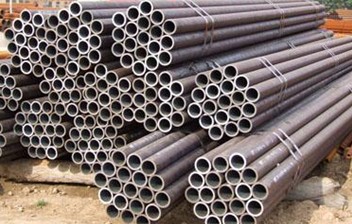Longitudinal rolling refers to the rolling method in which the main flow direction of the deformed metal is always the same as the forward direction of the rolled piece during the rolling process, that is, the deformed metal flows along the rolling centerline to the exit of the pipe mill in the deformed pass formed by the rolls. Cross rolling is a rolling method in which deformed metal flows obliquely at a certain angle to the rolling center line in the pass. The specific performance is that the rolled piece advances in a spiral after deformation. As a special case of cross rolling, only when the rolls of the cross rolling mill make planetary motion around the rolling center line, theoretically, the rolled piece can move in a straight line relative to the rolling center line.
The hot-rolling production process of seamless pipes, as the second extension and deformation rolling after piercing, still aims to achieve the wall thickness of the deformed blank tube at or close to the wall thickness of the final product, and at the same time make it have good surface quality and internal structure . Therefore, as far as the seamless steel pipe rolling process is concerned, the longitudinal rolling process and the skew rolling process are only different in deformation mode. Cold drawn seamless tubing are usually longitudinally rolled. Cross rolling is the main production process of thermal expansion pipe.

Advantages of cross rolling process
(1) Low cost, many varieties, high alloy and special tubes can be produced.
(2) It can be heated and deformed at one time, flexible in production and irreplaceable.
Defects of cross rolling process
(1) The deformation of the skew rolling mill is small, the elongation coefficient is small, and the rolling capacity of thin-walled steel pipes is lower than that of longitudinal rolling.
(2) There are obvious spiral marks left by hardening on the inner surface of the finished steel pipe of the skew rolling mill. Generally speaking, the height difference or depth of such spiral traces is 0-0.20mm.
The characteristics of longitudinal rolling forming are:
(1) The axes of the two working rolls are parallel and their rotation directions are opposite;
(2) The rolled piece moves in a straight line perpendicular to the axis of the roll. The material in and out is completed by the roll itself. It includes various rough rolling mills, blanking machines, section steel rolling mills, plate and strip rolling mills, automatic pipe rolling mills and various longitudinal rolling mills for finished parts. Two types of products can be produced: one type is of equal cross-section in its length direction. The other type is variable section in its length direction.
The hot-rolling production process of seamless pipes, as the second extension and deformation rolling after piercing, still aims to achieve the wall thickness of the deformed blank tube at or close to the wall thickness of the final product, and at the same time make it have good surface quality and internal structure . Therefore, as far as the seamless steel pipe rolling process is concerned, the longitudinal rolling process and the skew rolling process are only different in deformation mode. Cold drawn seamless tubing are usually longitudinally rolled. Cross rolling is the main production process of thermal expansion pipe.

Advantages of cross rolling process
(1) Low cost, many varieties, high alloy and special tubes can be produced.
(2) It can be heated and deformed at one time, flexible in production and irreplaceable.
Defects of cross rolling process
(1) The deformation of the skew rolling mill is small, the elongation coefficient is small, and the rolling capacity of thin-walled steel pipes is lower than that of longitudinal rolling.
(2) There are obvious spiral marks left by hardening on the inner surface of the finished steel pipe of the skew rolling mill. Generally speaking, the height difference or depth of such spiral traces is 0-0.20mm.
The characteristics of longitudinal rolling forming are:
(1) The axes of the two working rolls are parallel and their rotation directions are opposite;
(2) The rolled piece moves in a straight line perpendicular to the axis of the roll. The material in and out is completed by the roll itself. It includes various rough rolling mills, blanking machines, section steel rolling mills, plate and strip rolling mills, automatic pipe rolling mills and various longitudinal rolling mills for finished parts. Two types of products can be produced: one type is of equal cross-section in its length direction. The other type is variable section in its length direction.









